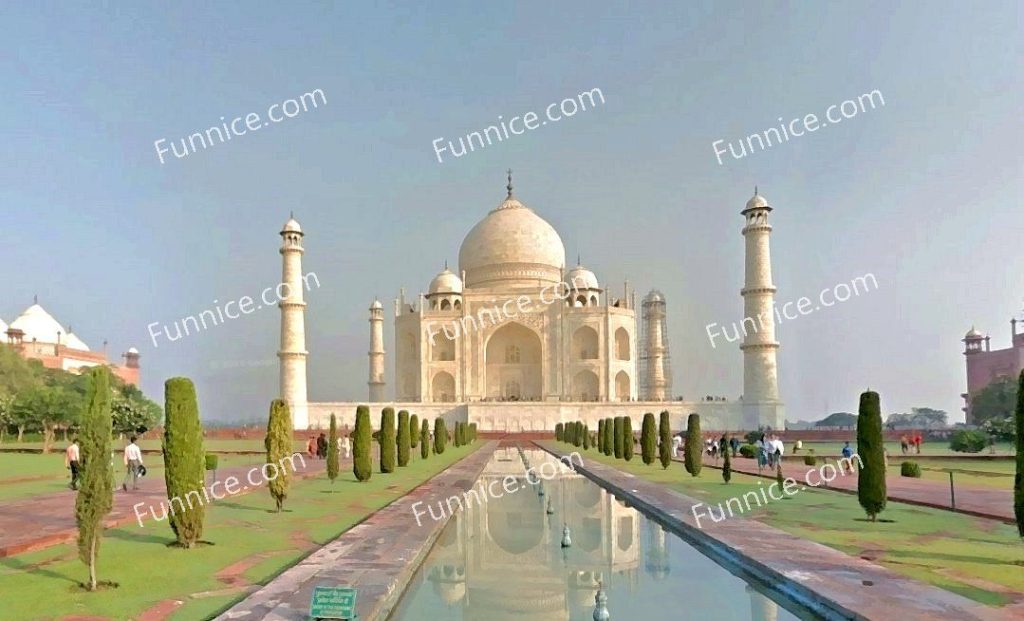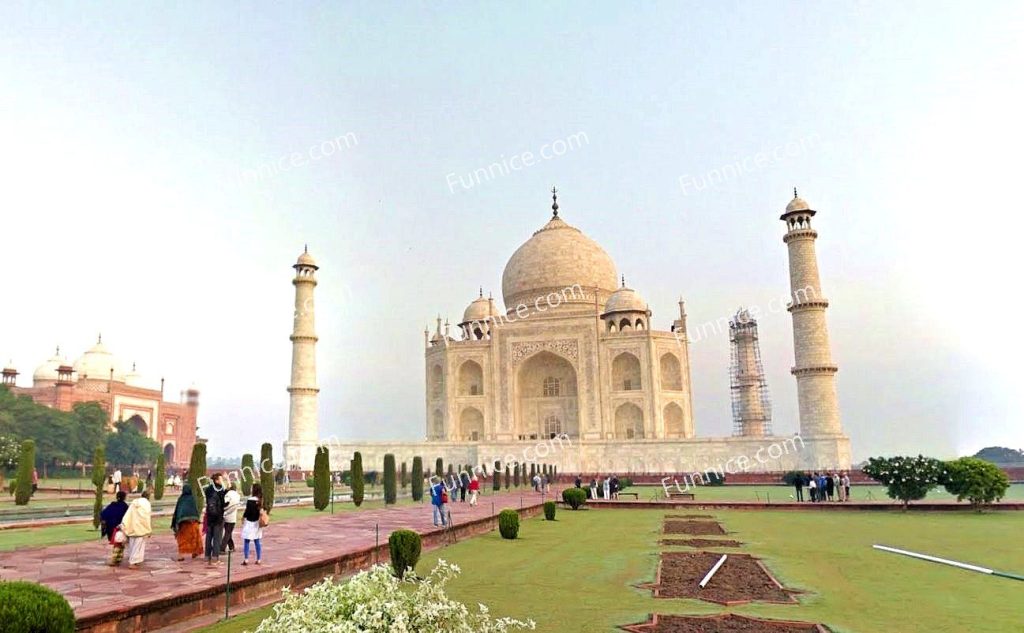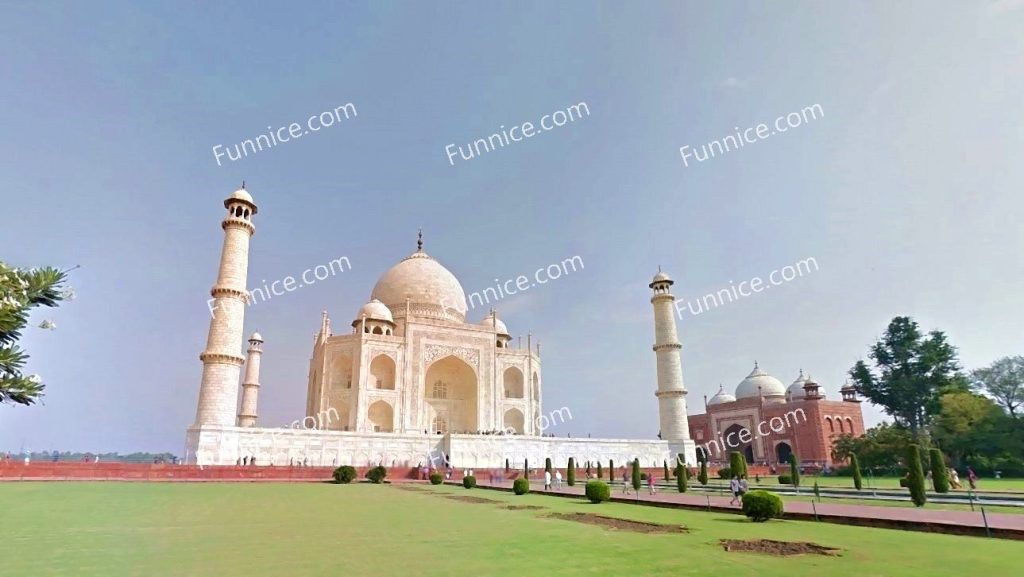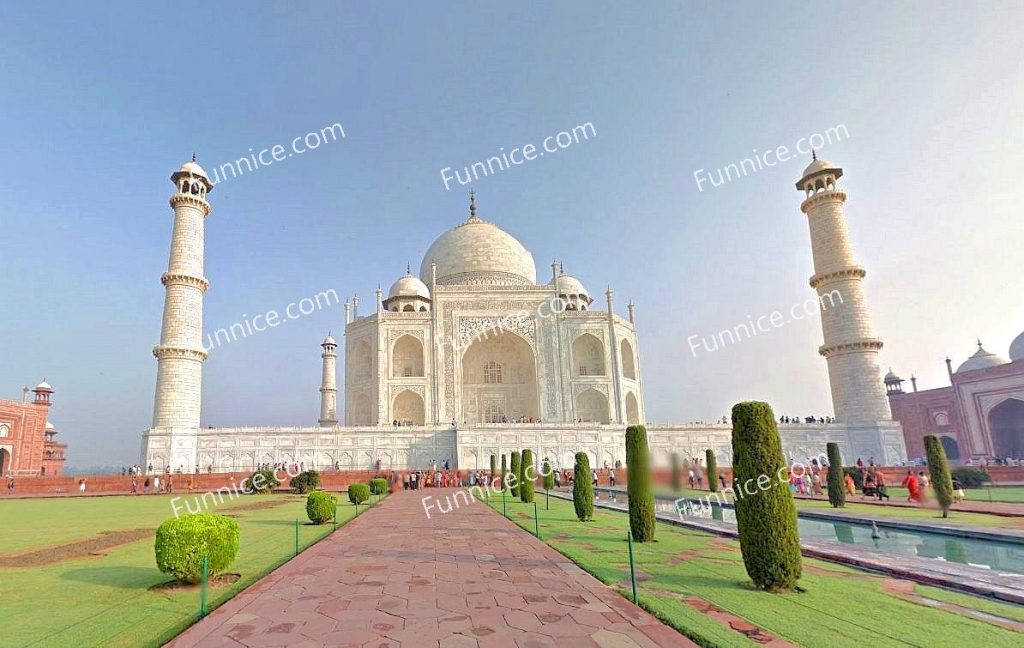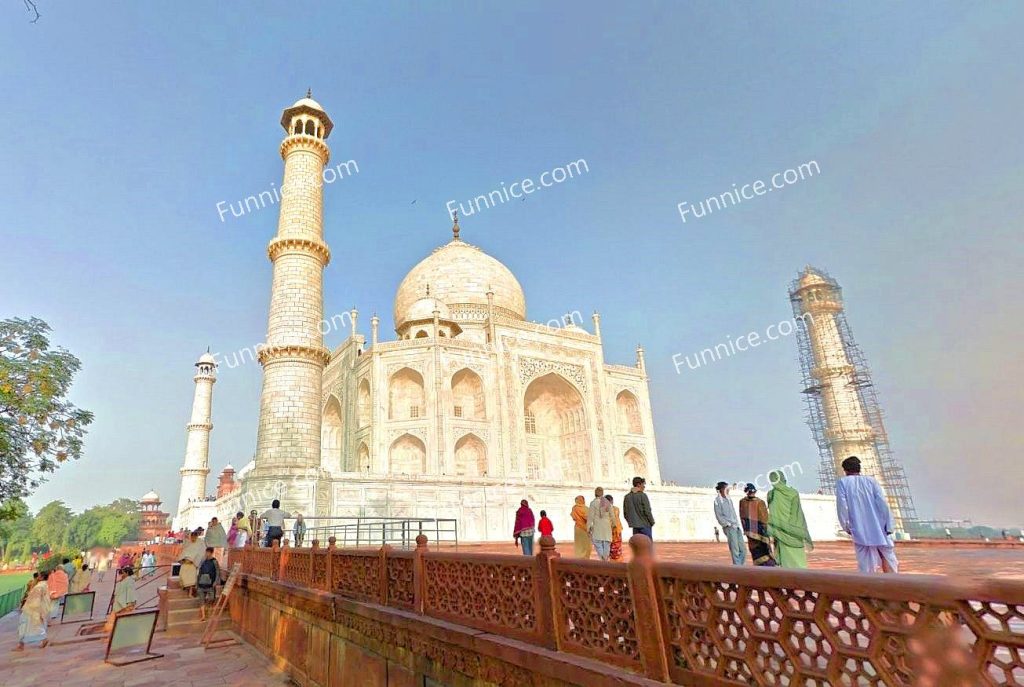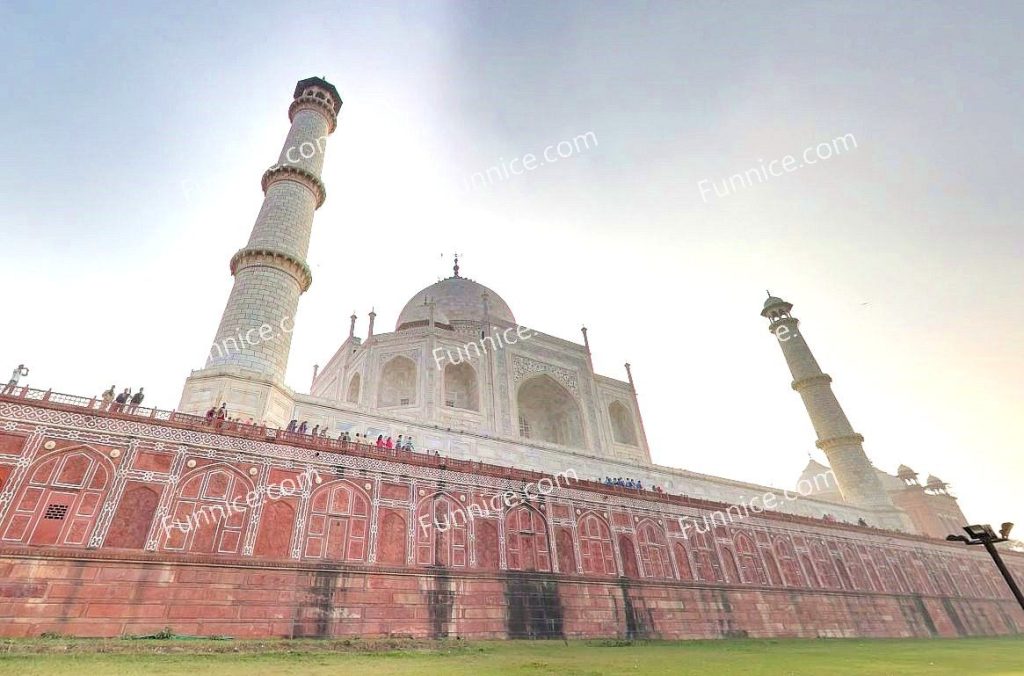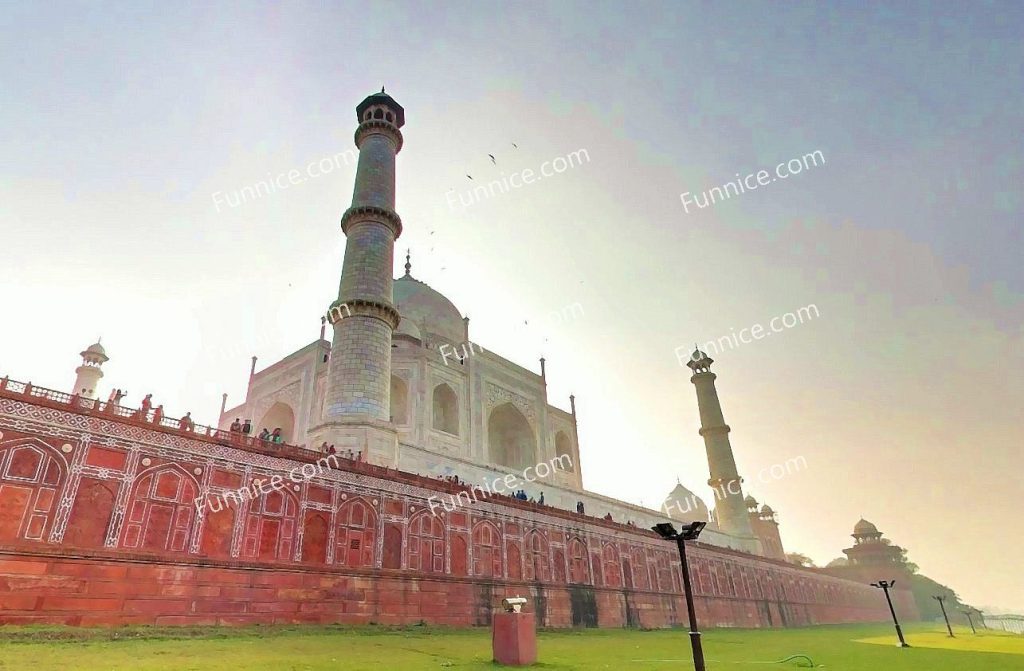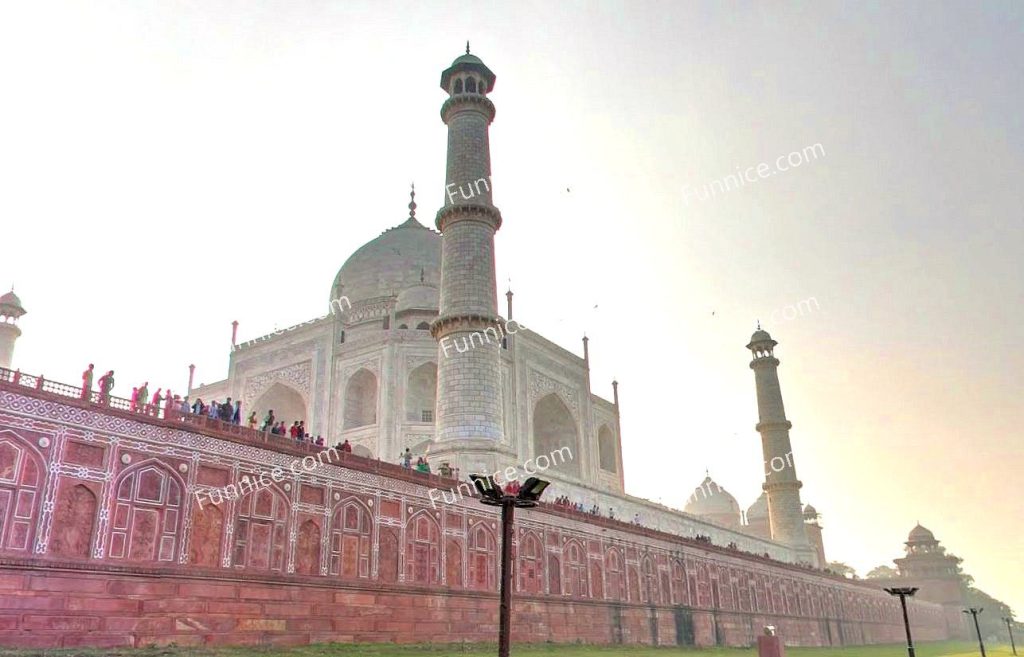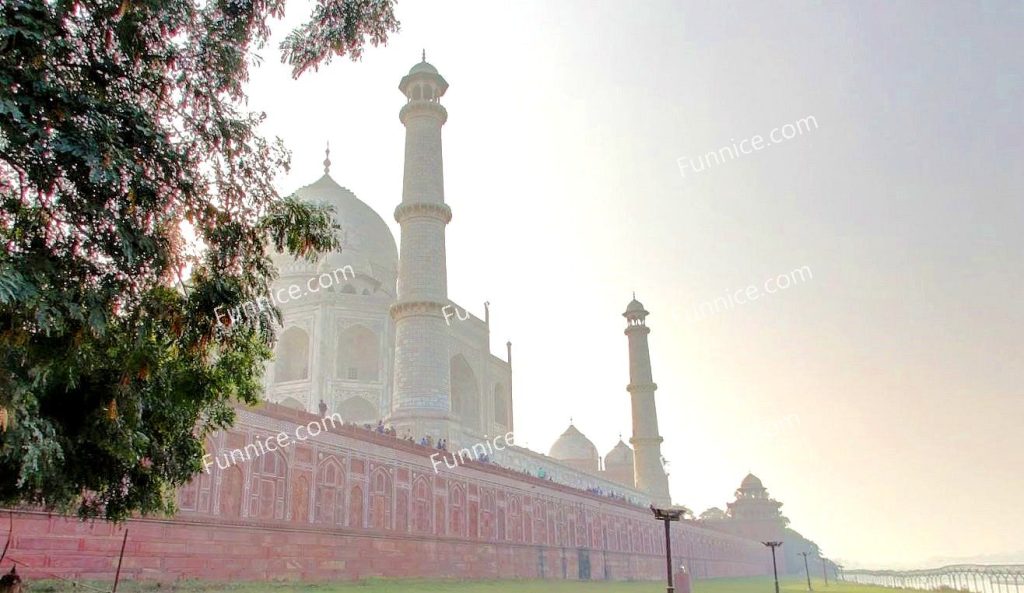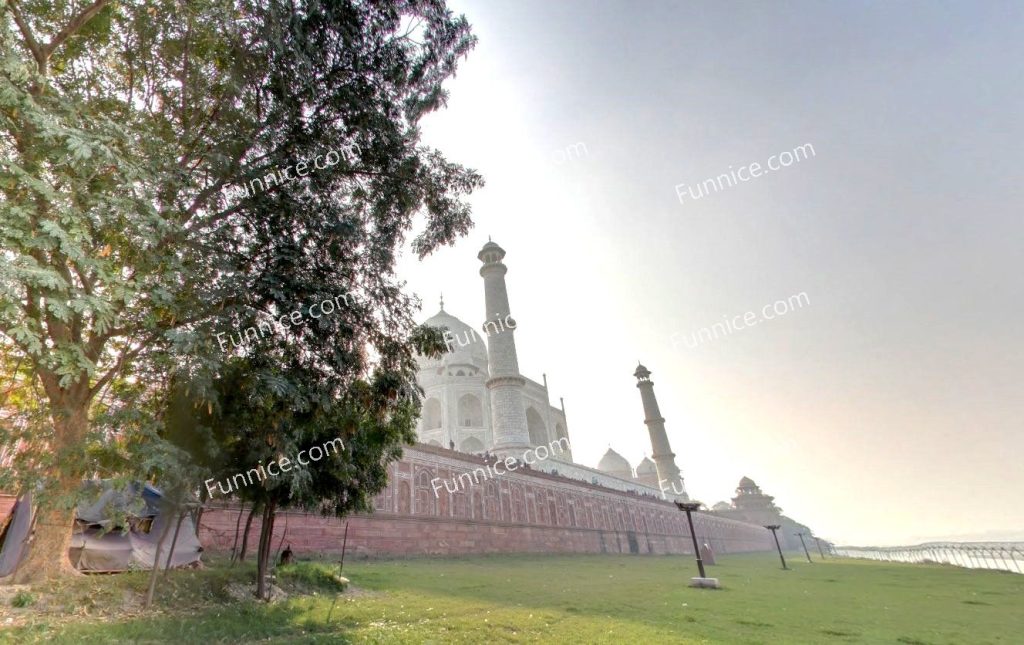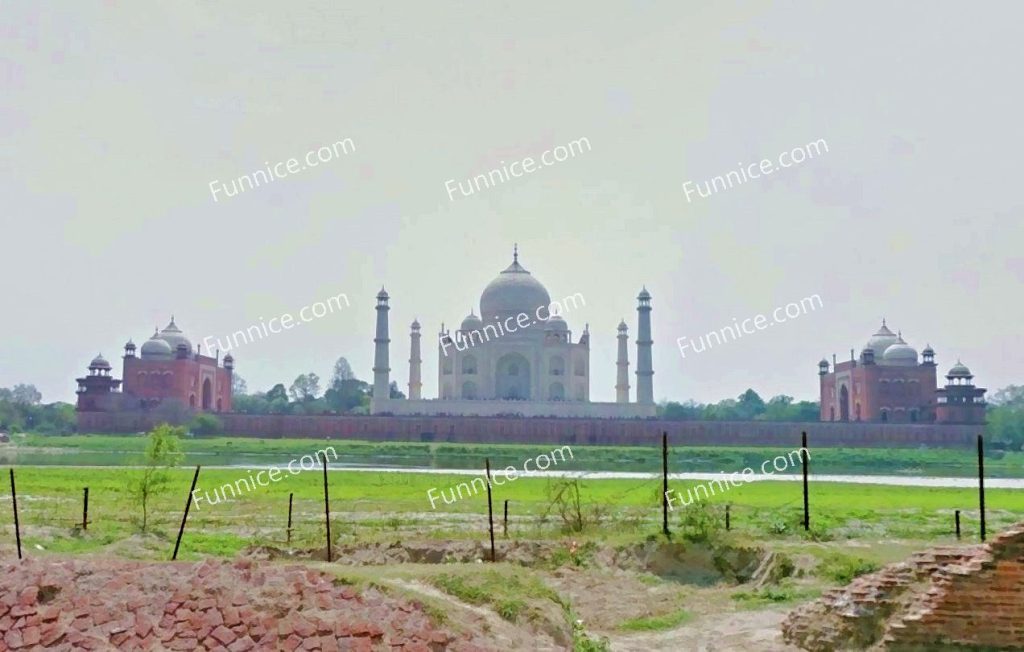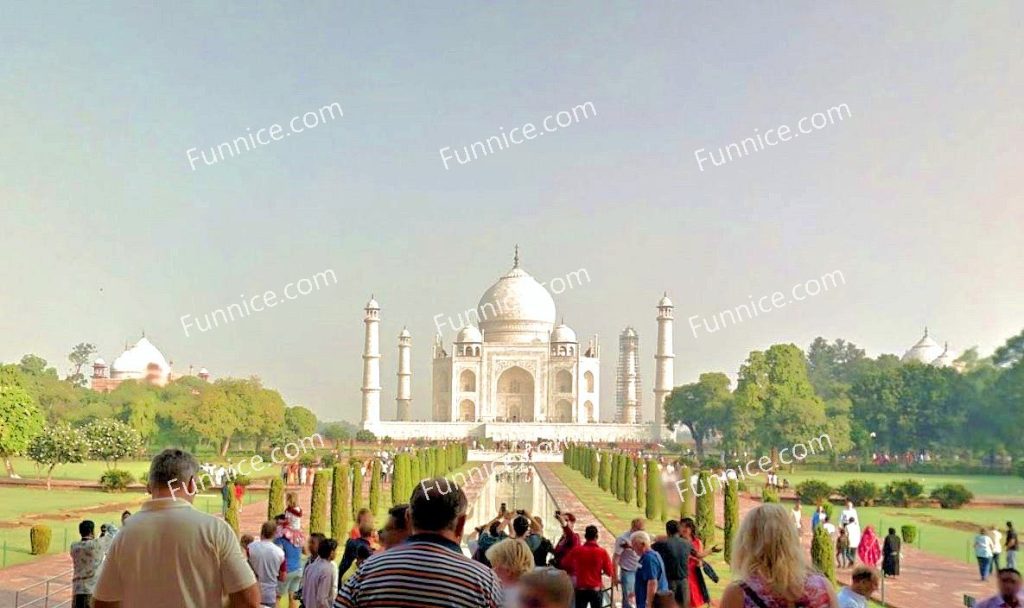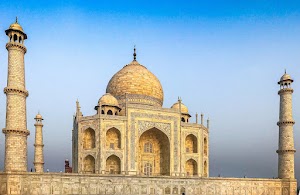The Taj Mahal (تاج محل, taj mahal, ताजमहल, taajamahal) located in Agra, Uttar Pradesh, India, the Taj Mahal is one of the most renowned architectural masterpieces in the world. Built from ivory-white marble, this mausoleum is not only an unparalleled work of art but also a historical monument that tells a tale of love and remembrance. It was commissioned by the fifth emperor of the Mughal dynasty, Shah Jahan, in memory of his beloved second wife, Mumtaz Mahal. After her passing, Shah Jahan was overwhelmed with grief and resolved to build a magnificent mausoleum as an everlasting tribute to her. Later, upon his own death, Shah Jahan was also laid to rest there, making the Taj Mahal a timeless symbol of their love.
The most recognizable feature of the Taj Mahal is its white marble domed mausoleum, but the complex is much more than just that. Spanning an area of 17 hectares, the Taj Mahal is an expansive architectural ensemble that includes a grand entrance gate, vast courtyards, an elegant mosque, and meticulously designed symmetrical gardens, all contributing to an exquisitely planned masterpiece. This mausoleum serves not only as a resting place but also as an artistic marvel that showcases architectural grandeur and cultural harmony.
The Taj Mahal is widely regarded as “the pinnacle of Indian Islamic architecture,” as it seamlessly blends Indian and Persian architectural styles. It is considered the finest example of Mughal architecture. Construction of the Taj Mahal began in 1632 and was completed around 1653, taking more than two decades and involving thousands of craftsmen and artisans. Shah Jahan personally oversaw the project, entrusting the design and construction to a team of master architects, including Mir Abd-ul Karim, Makramat Khan, and the Persian architect Ustad Ahmad Lahauri, who is widely believed to be the chief designer. The brilliance of these architects and artisans transformed the Taj Mahal into an architectural wonder beyond comparison.
The grandeur and intricacy of the Taj Mahal are truly breathtaking. Its white marble surface changes hues depending on the time of day, reflecting soft pink in the morning, pure white at noon, and golden tones at sunset, giving it a dreamlike quality. This remarkable visual effect further enhances the mystique and romantic aura of the monument.
In 1983, UNESCO designated the Taj Mahal as a World Heritage Site, describing it as “a jewel of Muslim art in India” and “one of the most magnificent and awe-inspiring masterpieces on the World Heritage list.” The Taj Mahal continues to attract millions of visitors from around the world and remains one of the most iconic structures globally.
More than just a monument of love, the Taj Mahal is a cultural symbol that embodies artistry, architecture, and history. Its enduring presence showcases the extraordinary craftsmanship of ancient builders while immortalizing Shah Jahan’s unwavering devotion to Mumtaz Mahal. Today, this awe-inspiring structure stands as a silent witness to the passage of time, captivating the hearts of countless visitors and leaving them in wonder.
